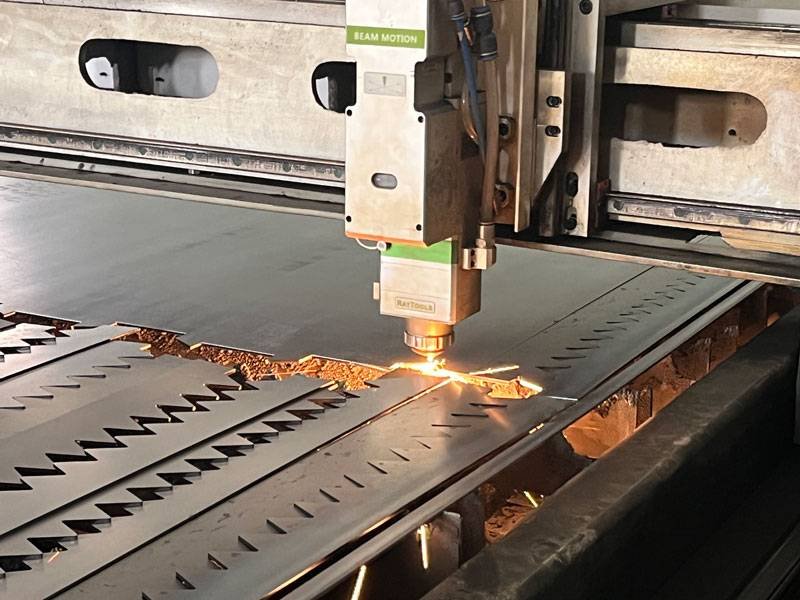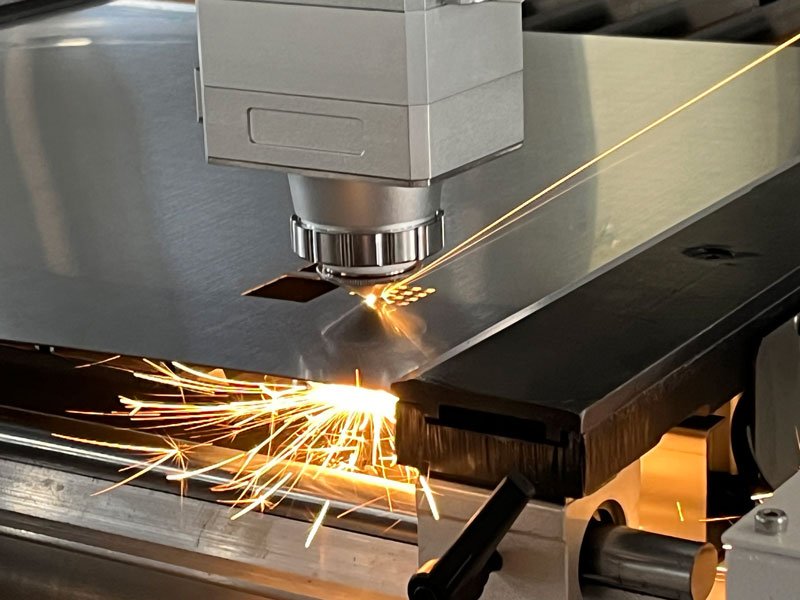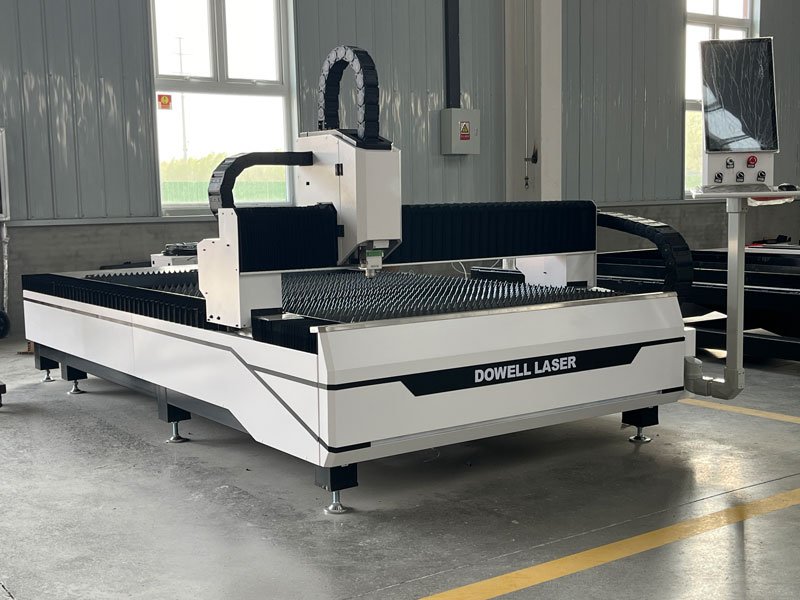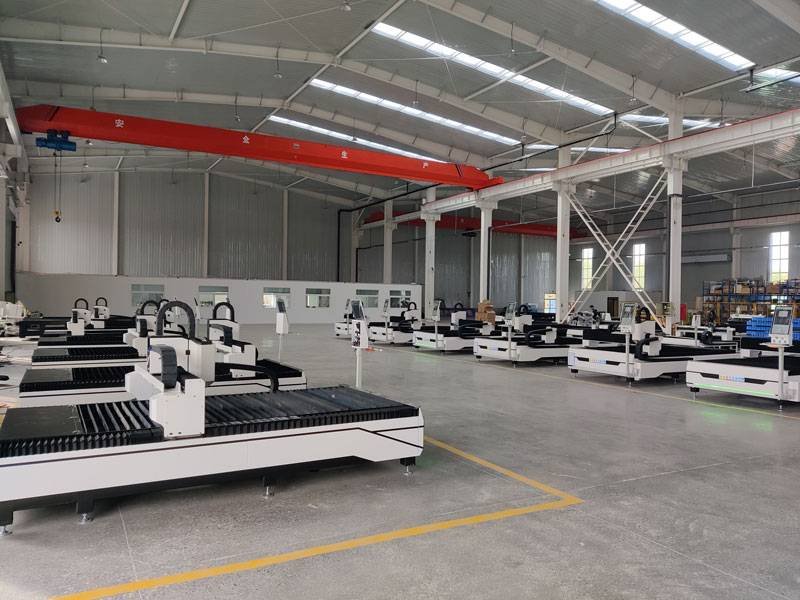In the world of crafts and design, laser cutters are versatile tools that can engrave and etch countless materials with precision. When you spend the money on attrezzature per il taglio laser, what should you do to set it up? This article delves into laser cutter settings for different materials and unlocks the secrets to harnessing the full power of this extraordinary tool.
Learn more about how to use laser cutter settings for different materials.
How Laser Cutting Works on Different Metal Types
Metal is a popular choice for laser cutting due to its durability and versatility. However, different types of metals require different laser cutter settings to achieve optimal results.
- For softer metals like aluminum or brass, lower power levels and faster speeds are recommended to prevent excessive melting or warping.
- Harder metals such as stainless steel or titanium may require higher power levels and slower speeds to ensure a clean cut without compromising structural integrity.

What Are the Laser Cutter Settings for Different Materials?
When it comes to laser cutting, understanding the optimal settings for different materials is crucial. Each material has its own unique properties and characteristics that require specific laser cutter settings to achieve clean cuts and precise engravings. In this section, we will explore the suggested laser cutter settings for various materials, allowing you to unleash your creativity with confidence.
Wood: Optimal Settings for Clean Cuts and Engravings
Wood is a timeless material that lends itself beautifully to laser cutting. To achieve clean cuts in wood, it is recommended to use low power levels and moderate speeds. This helps prevent charring or burning of the wood while maintaining precision. When it comes to engraving on wood, adjusting the power level can create varying depths of engraving, allowing you to add intricate details or create stunning patterns.
Acrylic: Finding the Balance Between Speed and Power
Acrylic is a popular choice for laser cutting due to its versatility and transparency. When working with acrylic, finding the right balance between speed and power is essential. Higher power levels combined with slower speeds can result in smooth edges without any signs of melting or discoloration. It’s important to note that acrylic releases harmful fumes when cut with a laser, so proper ventilation and safety precautions should always be in place.
Leather: Preserving Texture While Achieving Precision
Leather is a unique material that requires careful consideration when setting up the laser cutter. To preserve the texture of the leather while achieving precise cuts, it is recommended to use low power levels and moderate speeds. This allows the laser to gently etch or cut through the leather without causing excessive burning or scorching. Experimenting with different power levels can also create beautiful engraved designs on leather.
Fabric: Cutting with Precision Without Compromising Integrity
When it comes to laser cutting fabric, precision is key. Using low power levels and moderate speeds can help achieve clean cuts without compromising the integrity of the fabric. It’s important to note that fabrics such as polyester or nylon may release harmful fumes when cut with a laser, so proper ventilation and safety measures should be in place. Additionally, using a masking tape on the fabric before cutting can help prevent any fraying or distortion.
Paper: Delicate Settings for Intricate Designs
Paper is a delicate material that requires precise laser cutter settings to achieve intricate designs without tearing or burning. Low power levels and high speeds are recommended for cutting paper, allowing for clean edges without any signs of scorching. When it comes to engraving on paper, adjusting the power level can create varying depths of engraving, adding a touch of elegance to your designs.
Glass: Etching Techniques for a Translucent Finish
Glass offers a unique canvas for laser etching, allowing you to create stunning designs with a translucent finish. When working with glass, it is important to use low power levels and slow speeds to prevent cracking or shattering. Laser etching on glass requires multiple passes at a low power level to achieve the desired depth and clarity. It’s also recommended to use a specialized glass etching compound to enhance the visibility of the design.

When it comes to laser cutting metal, precision is paramount. Different types of metals require specific laser cutter settings to achieve high-precision cuts without compromising structural integrity. Adjusting the power level and speed based on the type and thickness of the metal is crucial. It’s also important to use assist gases such as nitrogen or oxygen to prevent oxidation and ensure clean cuts.
Plastics: Understanding Heat Resistance for Perfect Results
Plastics come in various forms, each with its own heat resistance properties. When laser cutting plastics, it is important to understand their heat resistance levels and adjust the laser cutter settings accordingly. Lower power levels combined with faster speeds are generally recommended for plastics to prevent melting or warping. Additionally, using a cooling system during the cutting process can help maintain the integrity of the plastic.
Stone: Harnessing the Power of Laser for Unique Engravings
Laser engraving on stone offers endless possibilities for creating unique designs and patterns. When working with stone, it is important to use high power levels and slow speeds to achieve deep engravings without causing any cracks or fractures. Experimenting with different power levels can create varying depths of engraving, allowing you to unleash your creativity on this timeless material.

Suggested Laser Cutter Settings for Different Materials
Laser cutters offer a precise and versatile way to cut and engrave a wide range of materials. However, achieving optimal results requires using the correct settings for each material. Here’s a guida to suggested laser cutter settings for some common materials:
Important Note: These are suggested settings and may need adjustments based on your specific laser cutter model, material thickness, and desired outcome. It’s always recommended to consult your laser cutter’s manual and perform test cuts on scrap material before working on your final project.
| Materiale | Cutting Speed (mm/s) | Laser Power (%) | Pulse Rate (Hz) | Gas Assist (On/Off) | Notes |
|---|---|---|---|---|---|
| Acrylic (3mm) | 30 – 50 | 80 – 90 | 500 – 1000 | On (Air) | Adjust speed and power based on desired edge finish (clean cut vs. polished) |
| Wood (Plywood, 3mm) | 10 – 20 | 30 – 50 | 500 – 1000 | On (Air) | Lower power for engraving, higher for cutting. Use compressed air to prevent burning. |
| Cardboard (2mm) | 20 – 40 | 30 – 50 | 500 – 1000 | On (Air) | Use compressed air to prevent burning. |
| MDF (3mm) | 5 – 15 | 40 – 60 | 500 – 1000 | On (Air) | Lower speed and higher power for clean cuts. Use compressed air to prevent burning. |
| Stainless Steel (0.5mm) | 10 – 20 | 80 – 100 | 500 – 1000 | On (Nitrogen) | Nitrogen assist prevents oxidation. |
| Fabric (Cotton, 2mm) | 100 – 200 | 10 – 30 | 1000+ | Off | Lower power for cleaner edges. Test cuts are crucial for fabric. |

What Safety Equipment Should Be Used When Laser Cutting?
Laser cutting involves high temperatures and potentially harmful fumes, so safety equipment is crucial.
- When operating a laser cutting machine, it is important to wear protective eyewear to protect against infrared and ultraviolet radiation.
- A suitable ventilation system should be installed to remove any fumes or fumes generated during the cutting process.
- Fire extinguishers and first aid kits should also be readily available in the event of an emergency.
Conclusion:
Understanding the suggested laser cutter settings for different materials is crucial to achieve optimal results. By adjusting the power level, speed, and other parameters based on the material being worked on, you can unleash your creativity and create stunning designs with precision. However, it’s important to always prioritize safety when working with a laser cutter and ensure that proper ventilation and protective equipment are in place. With practice and experimentation, you can master the art of laser cutter settings for diverse materials and bring your creative visions to life.
